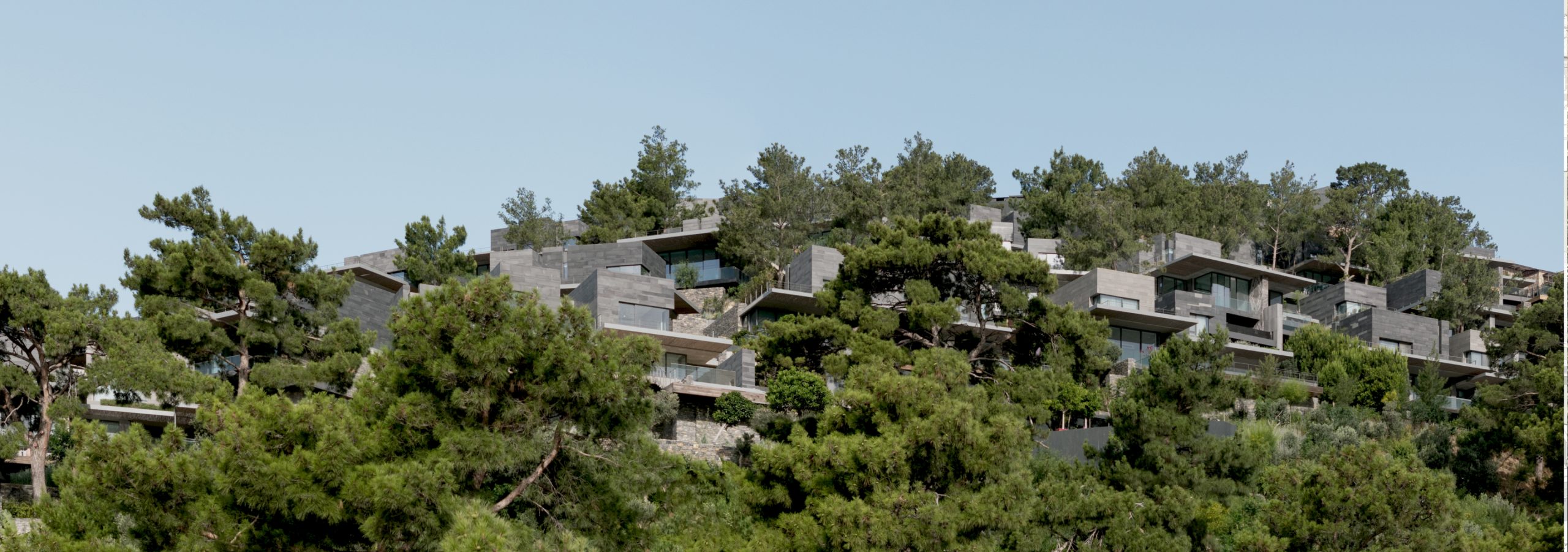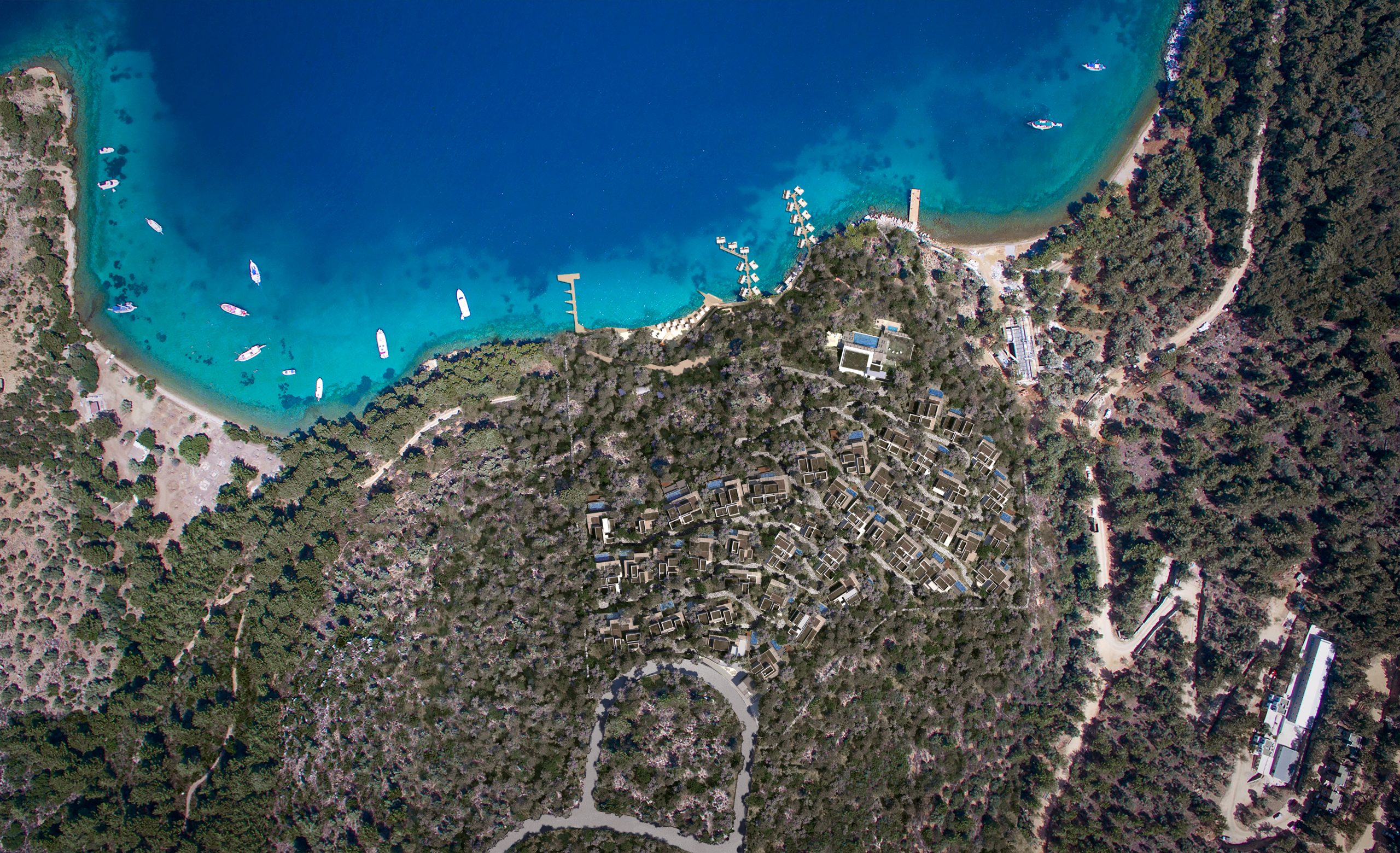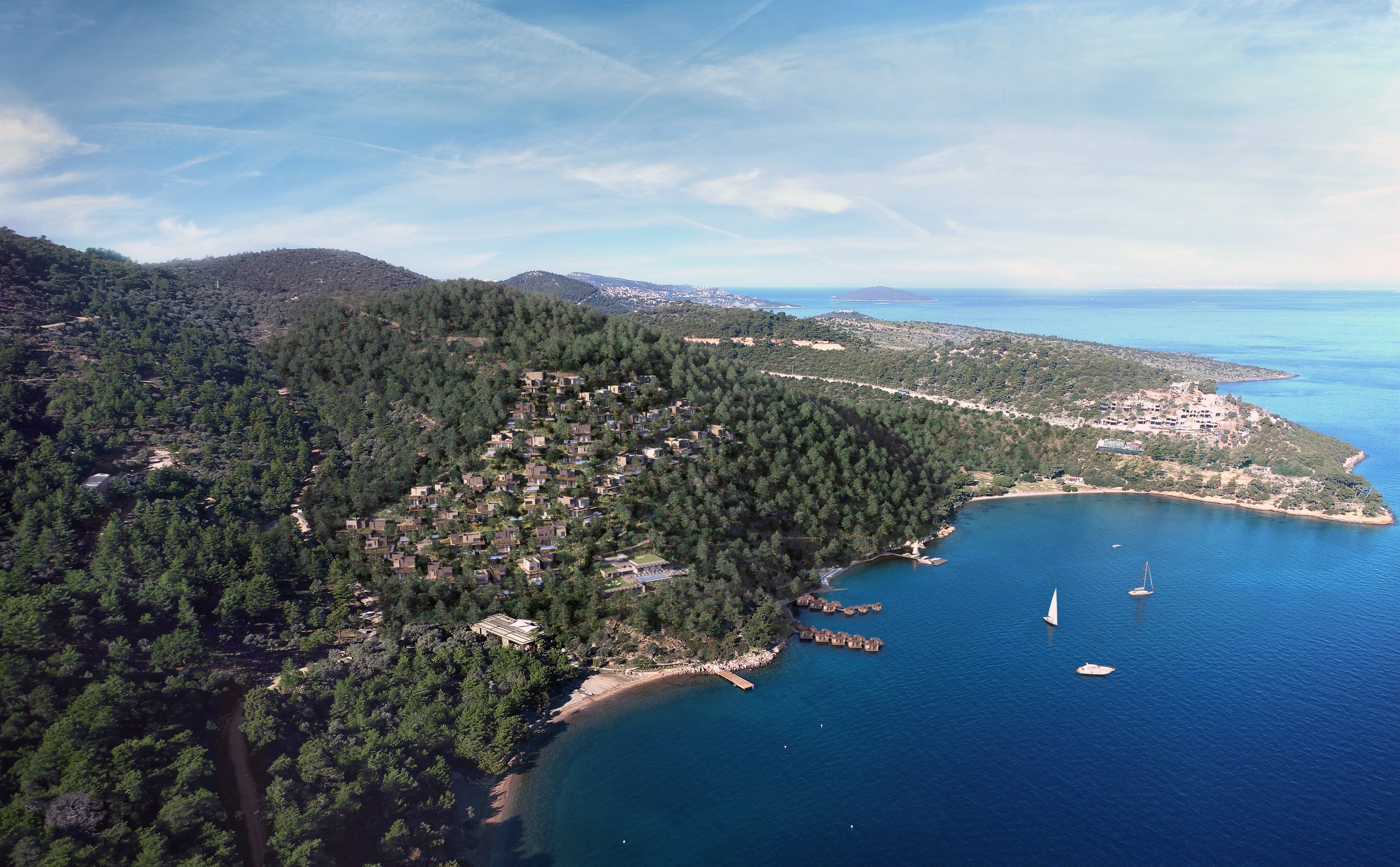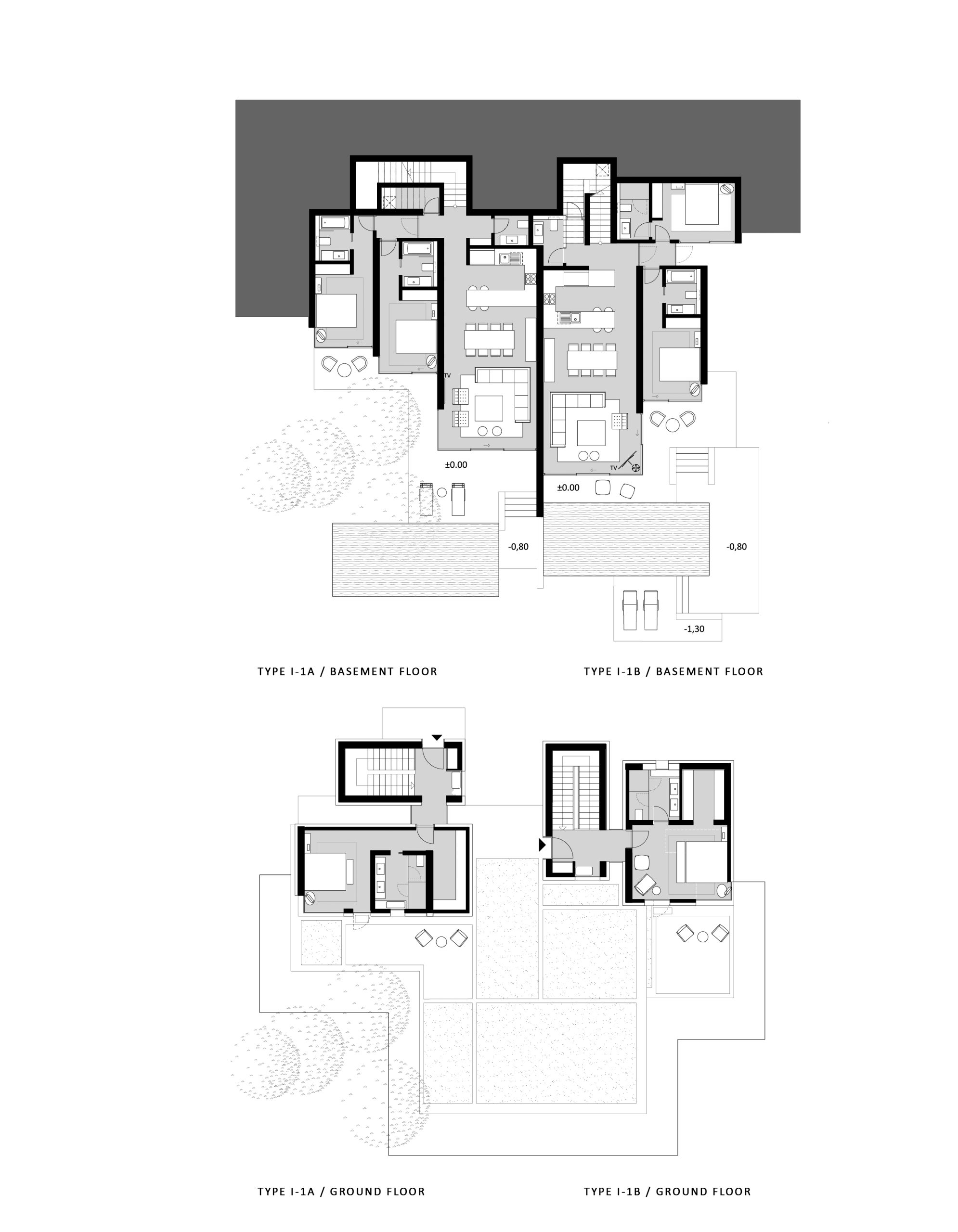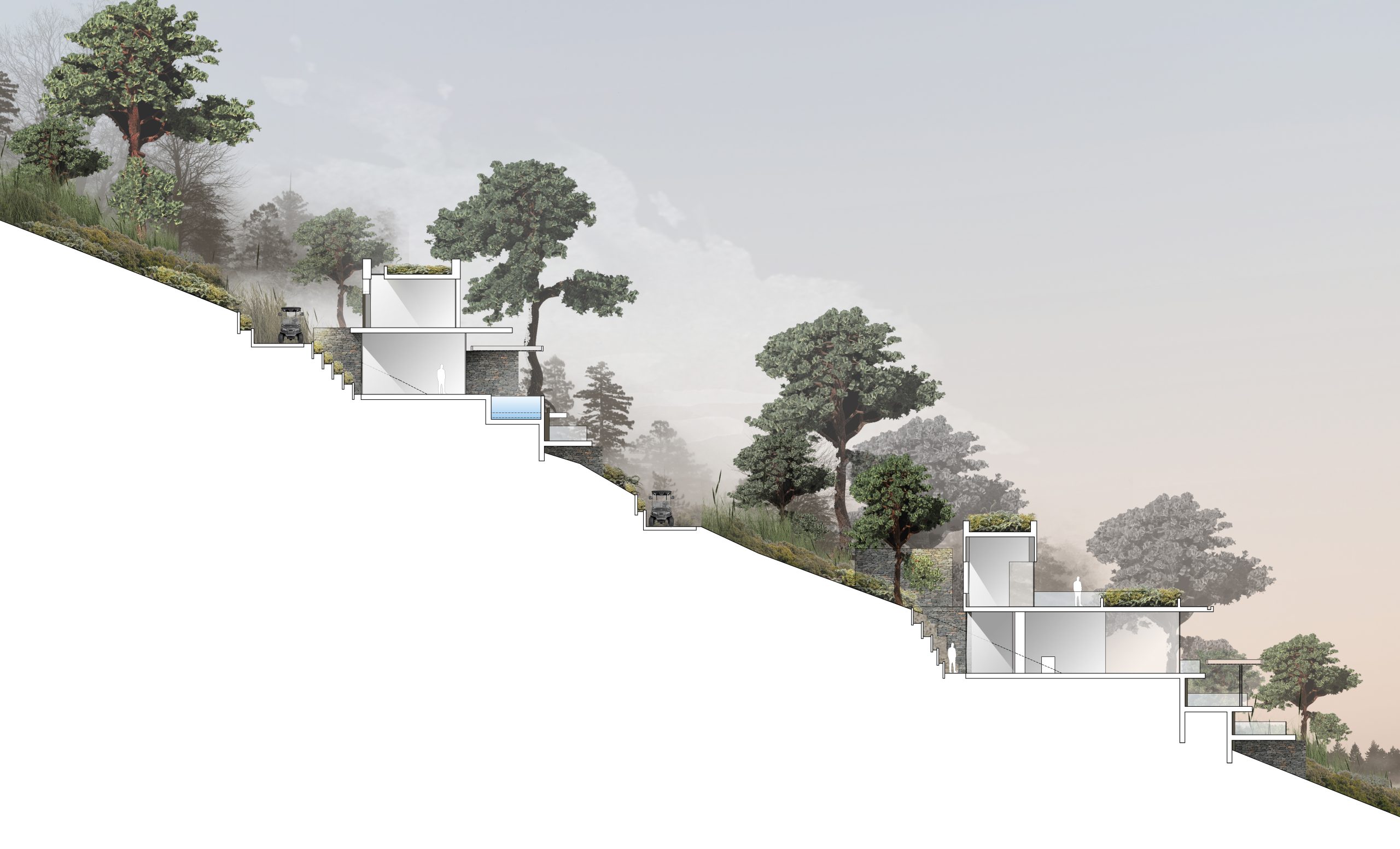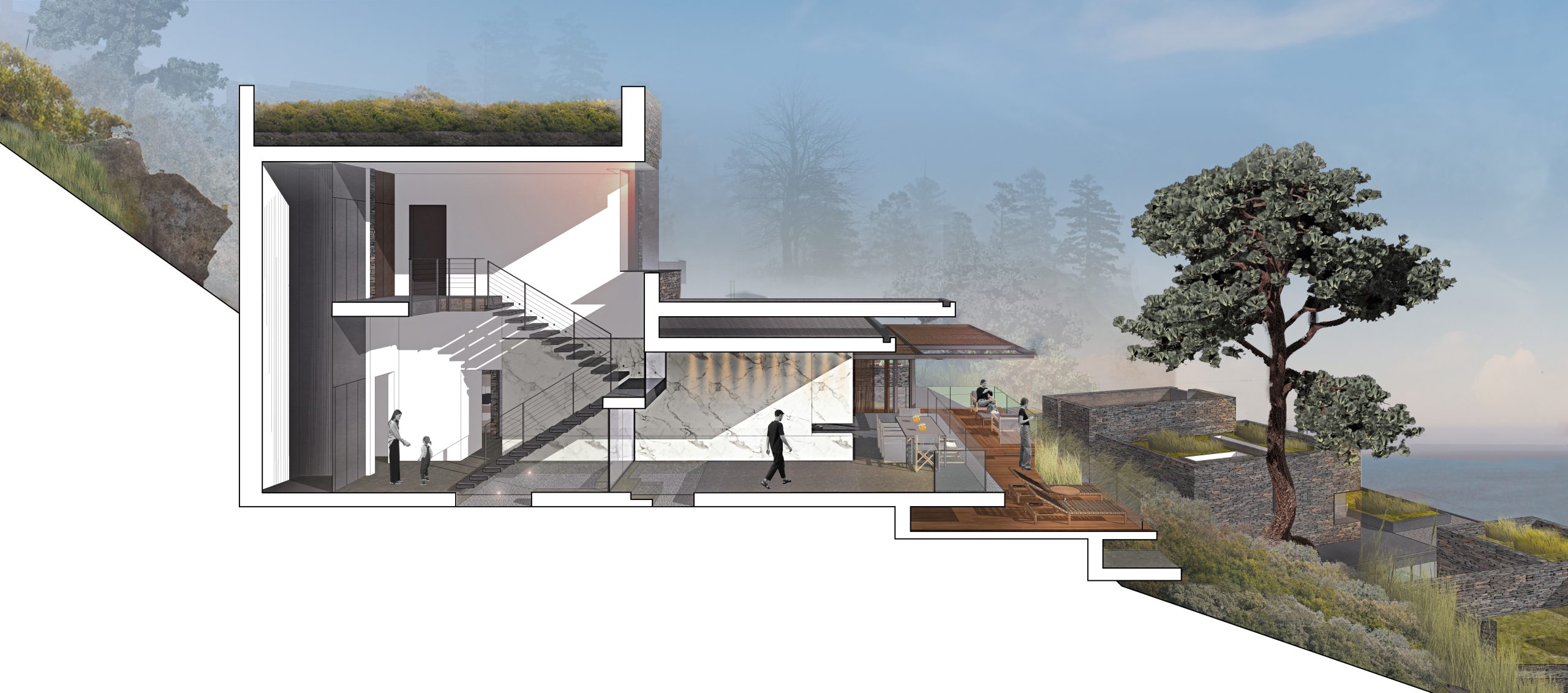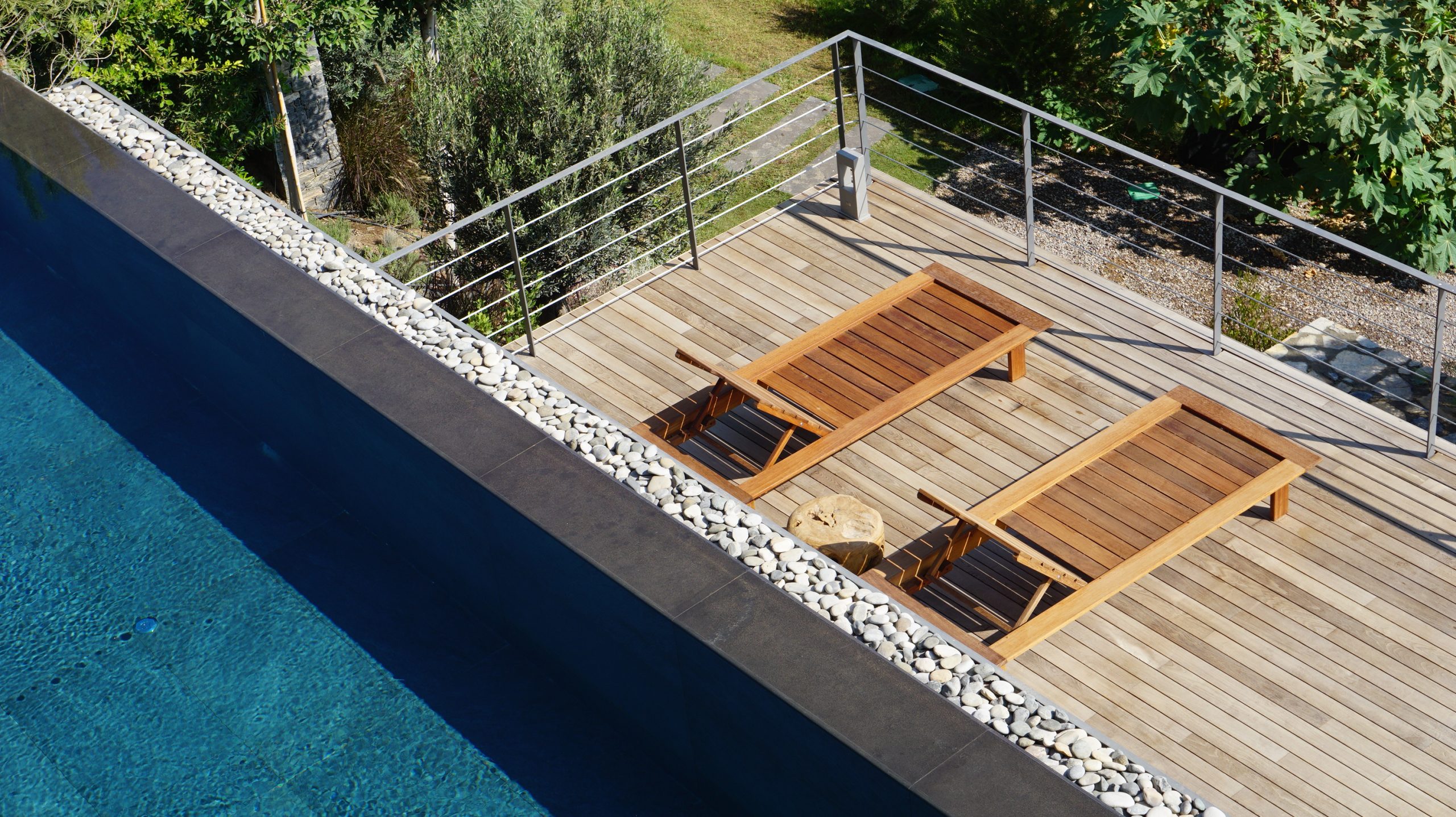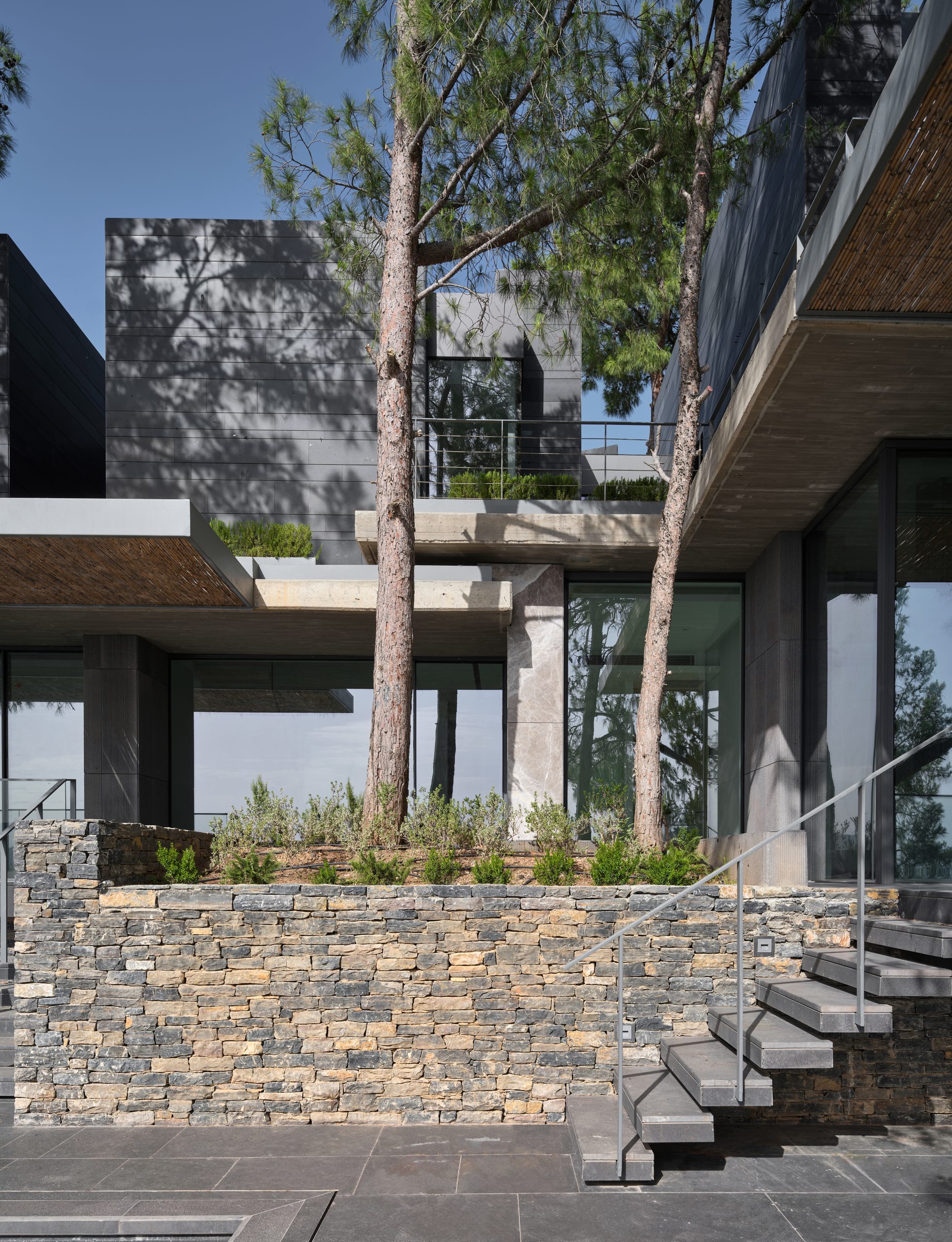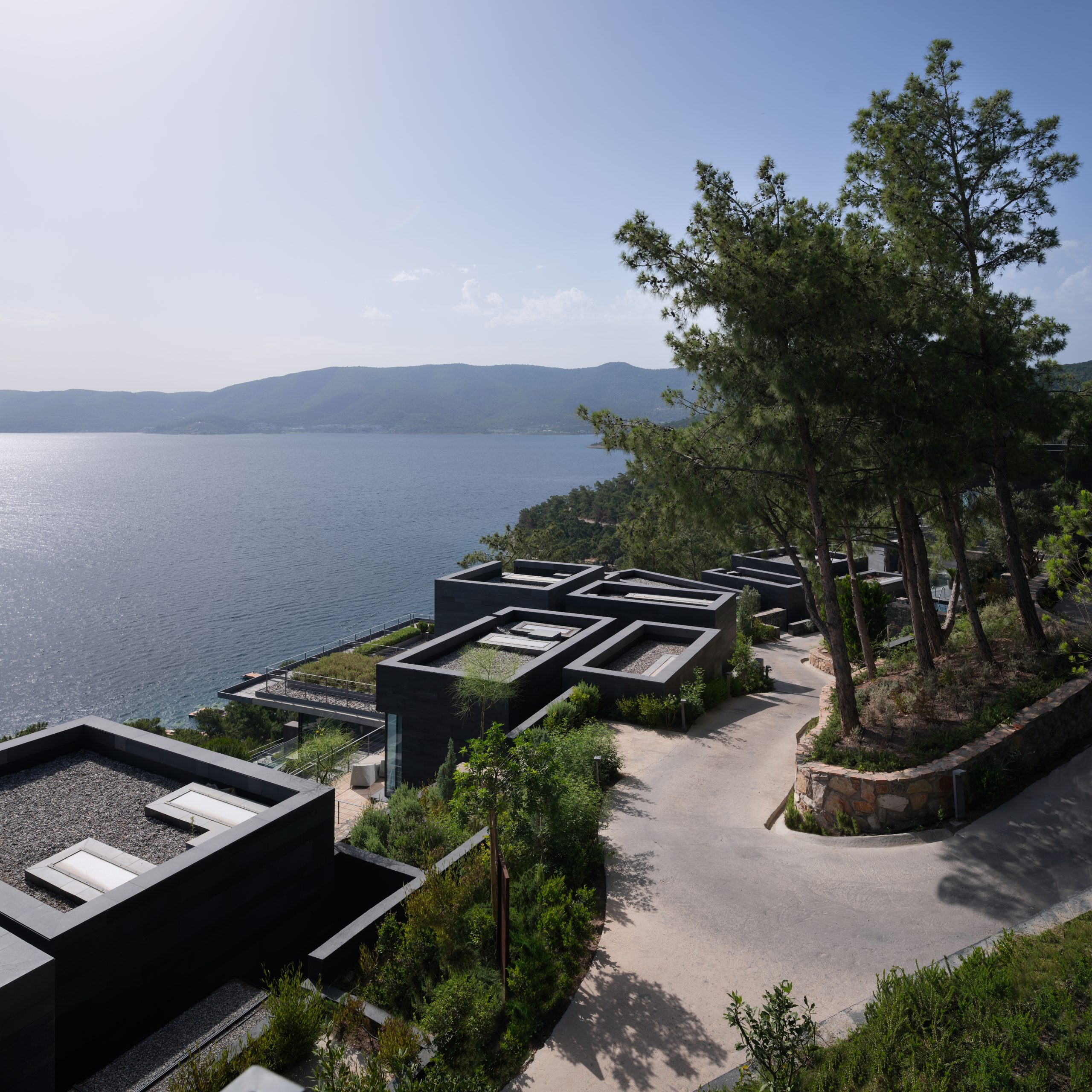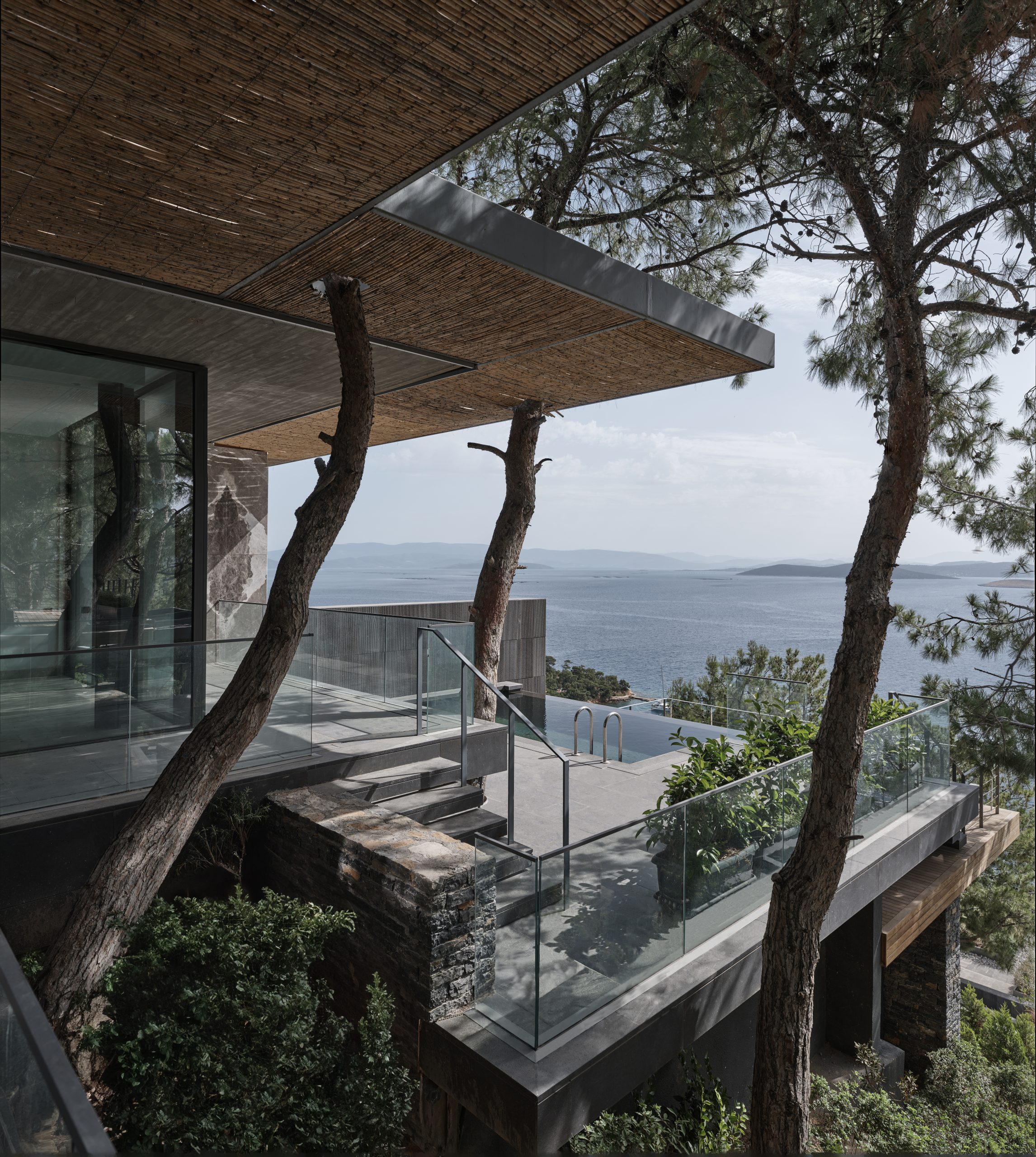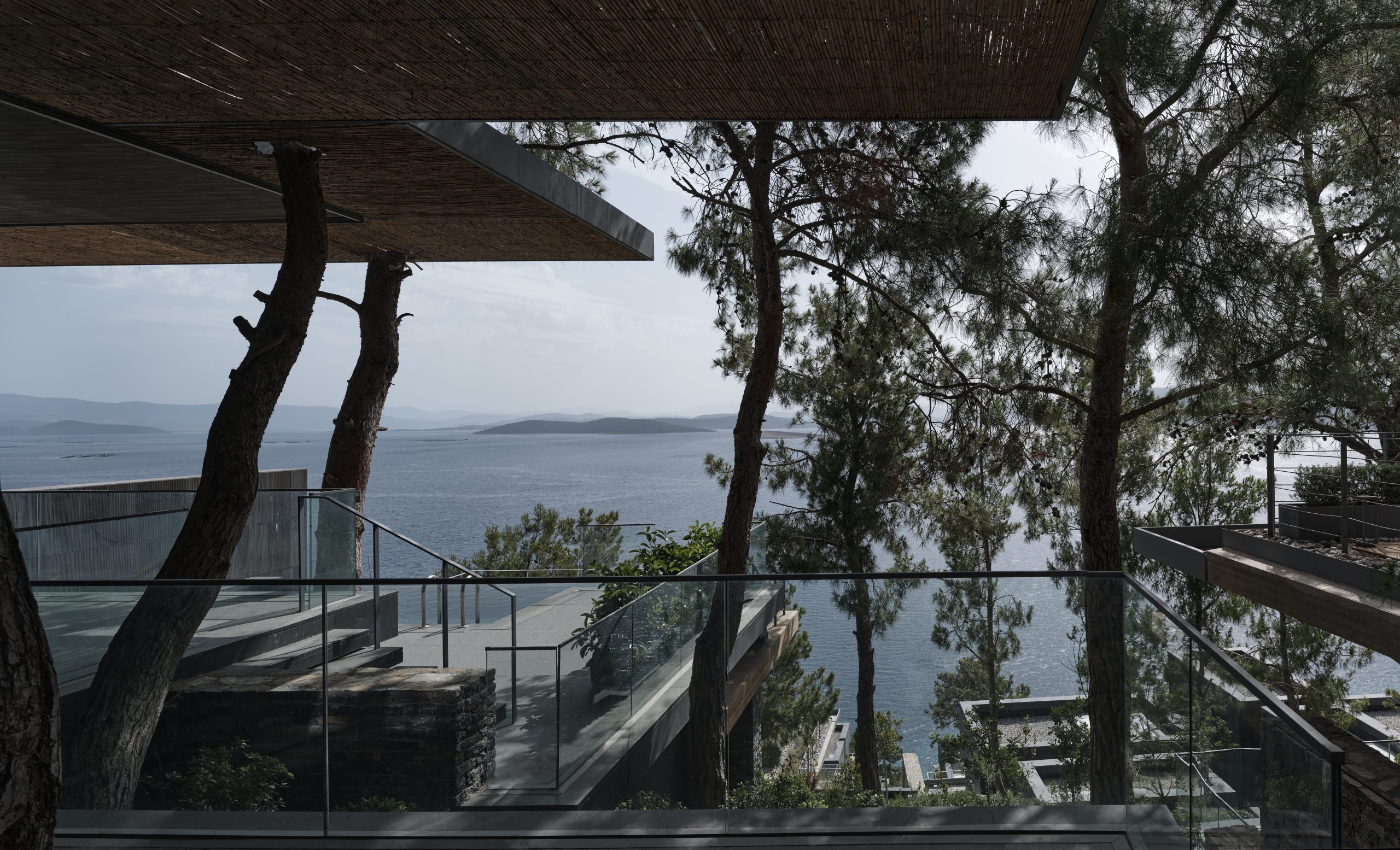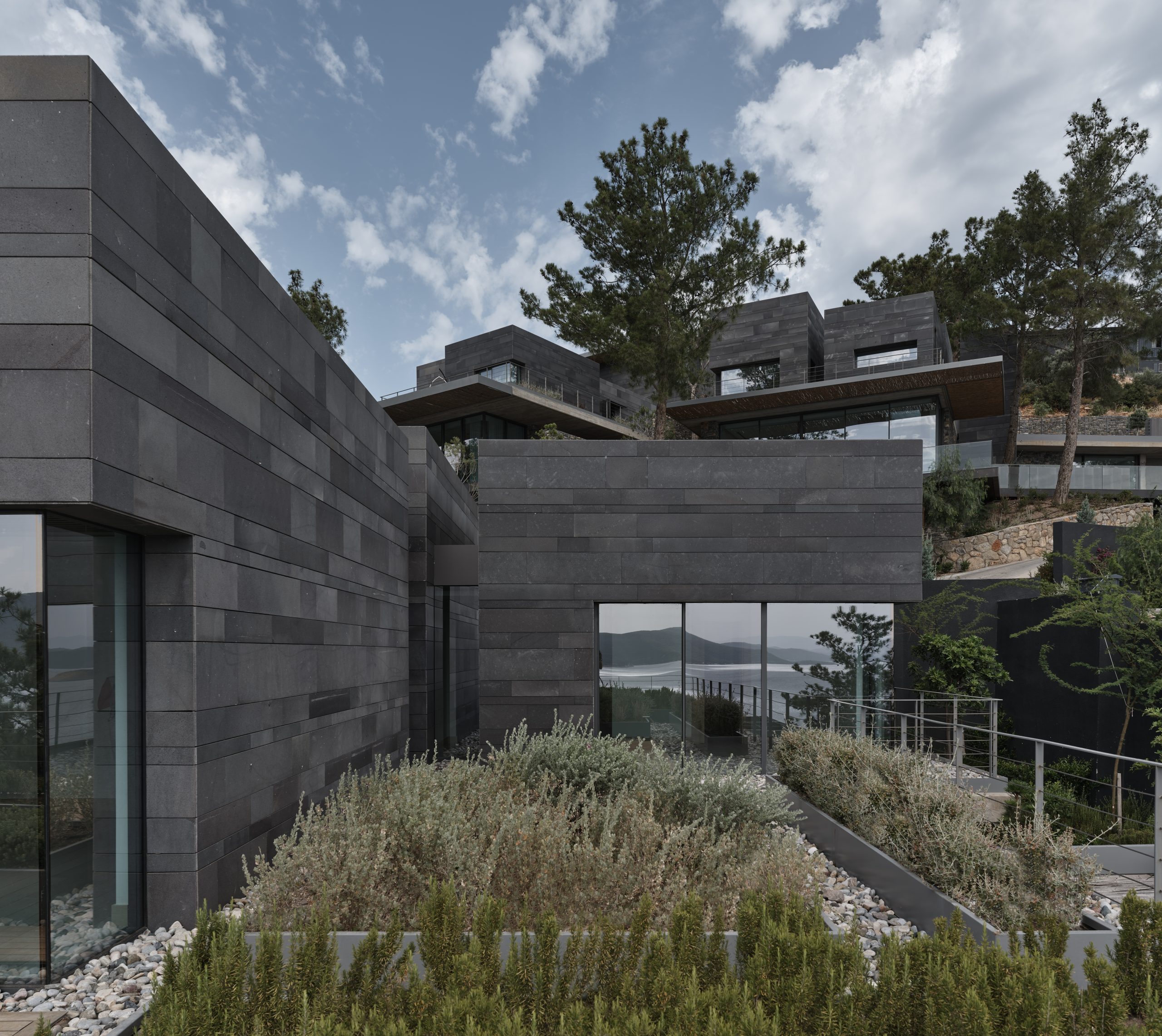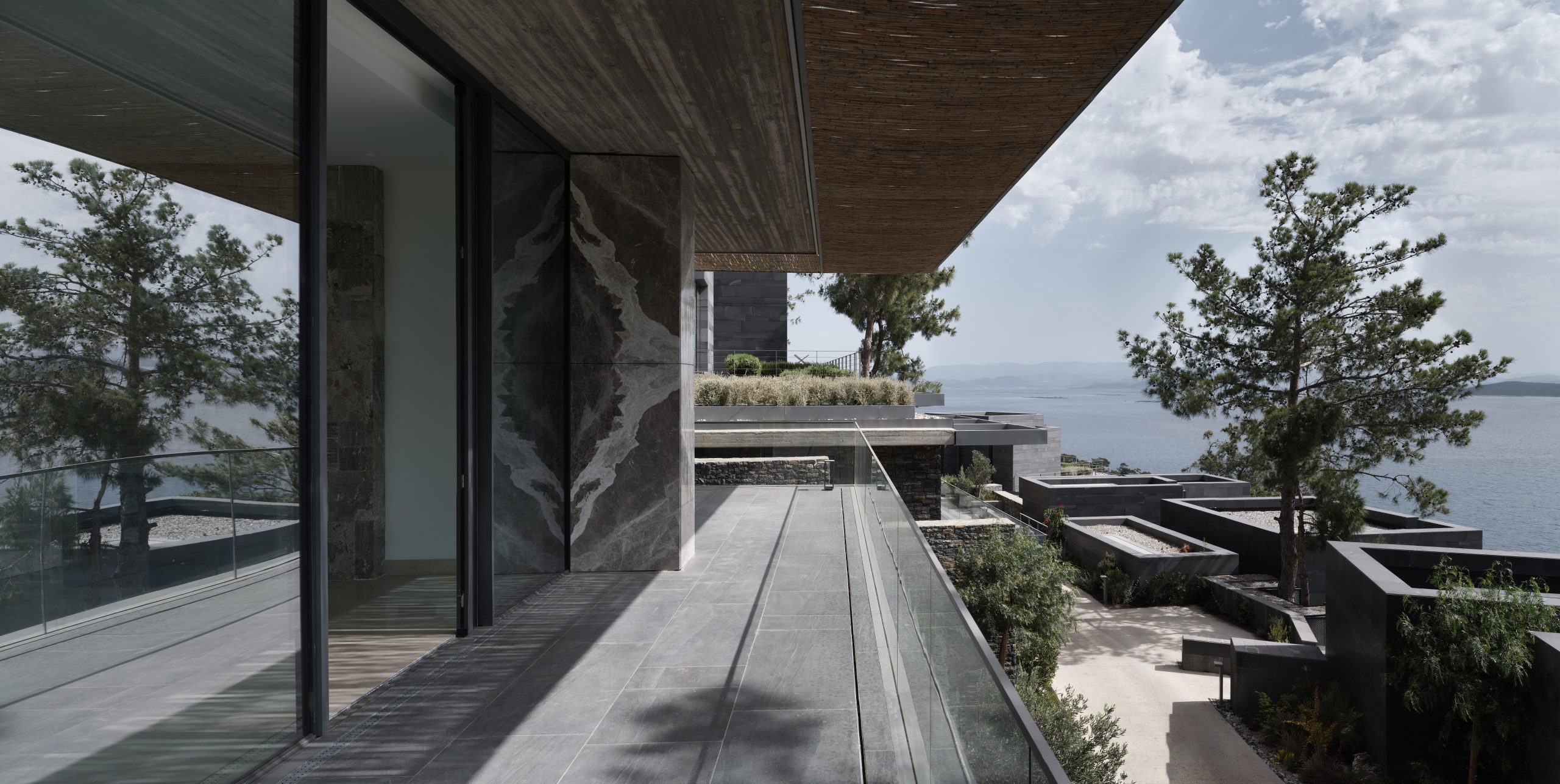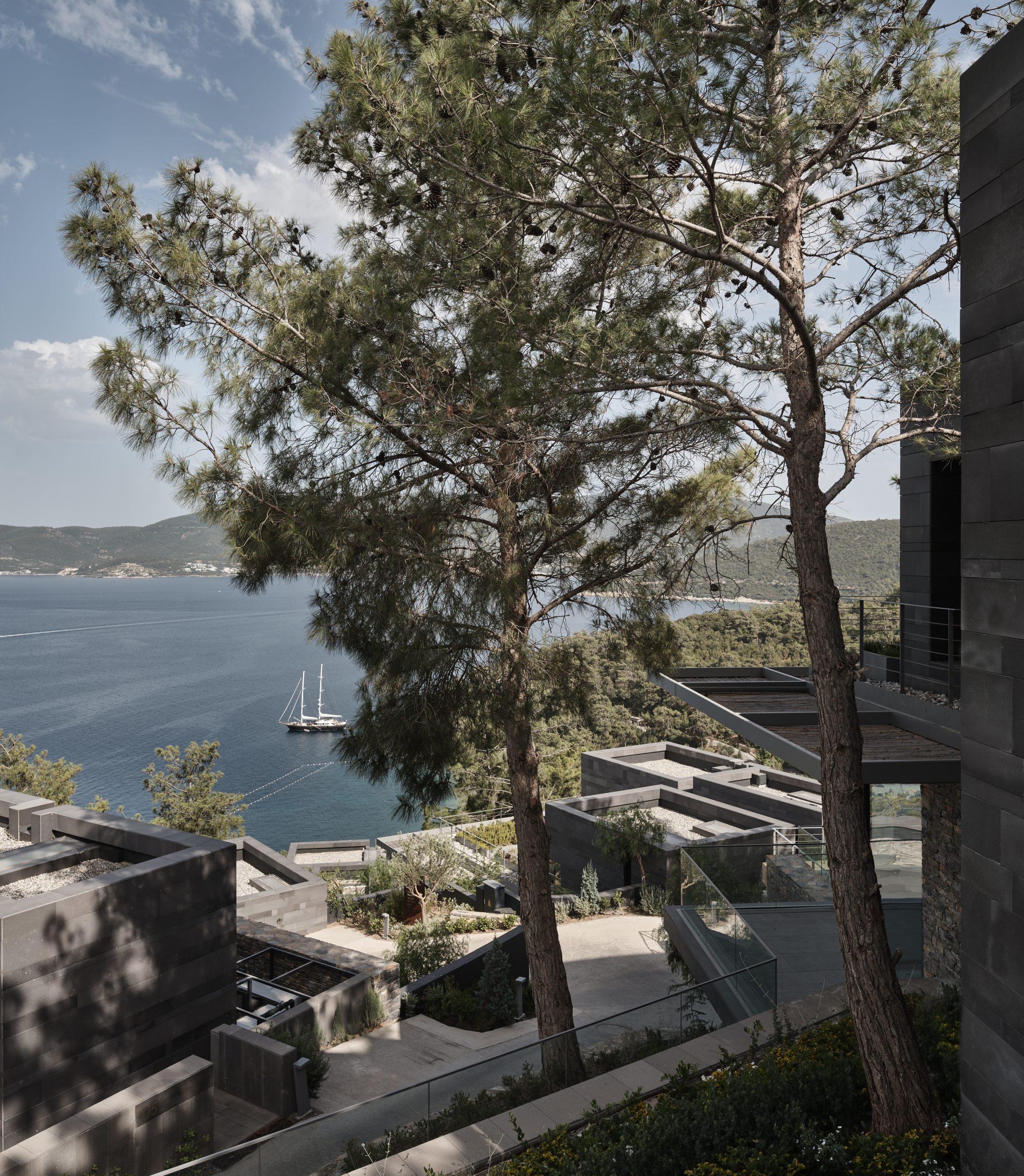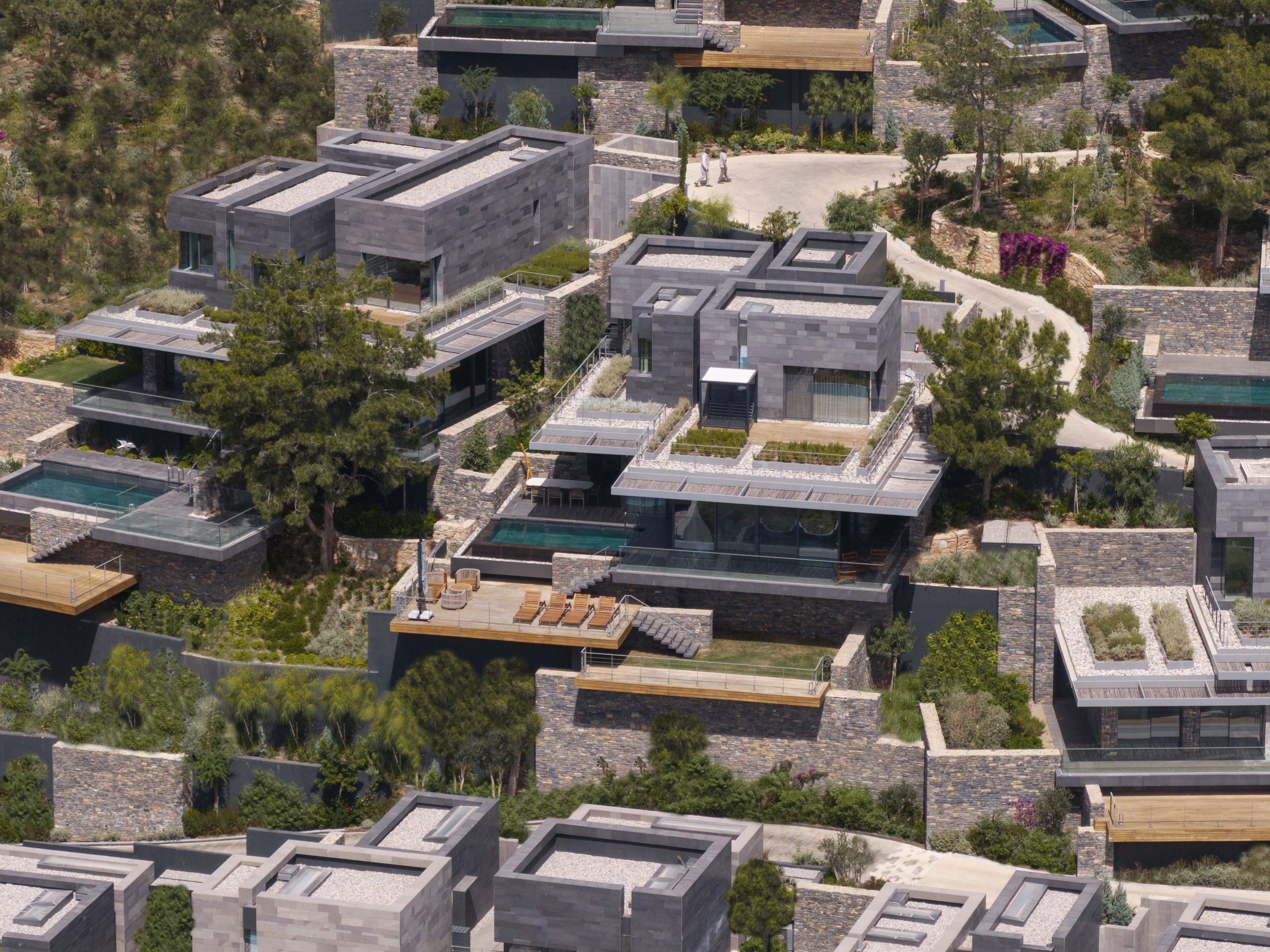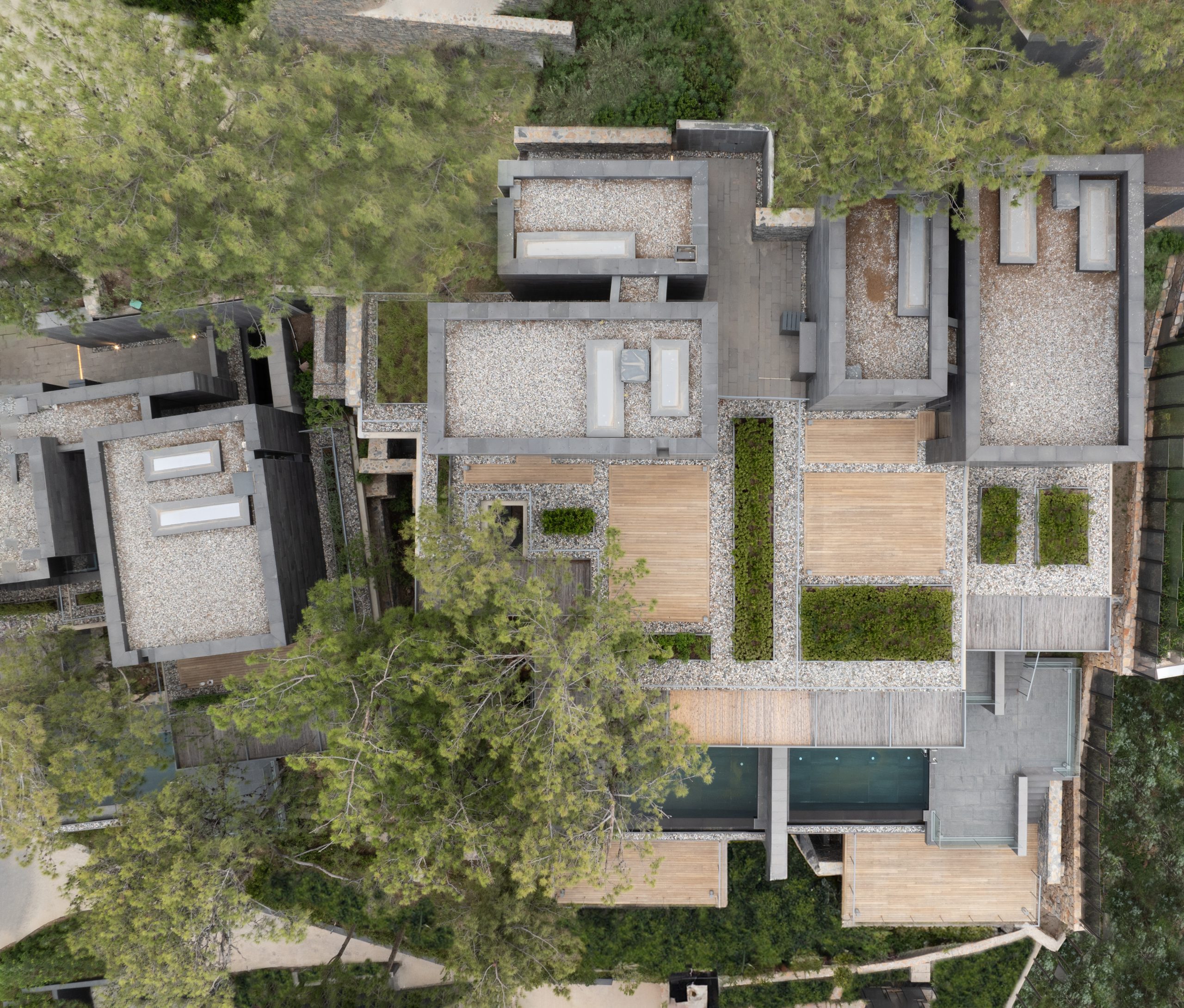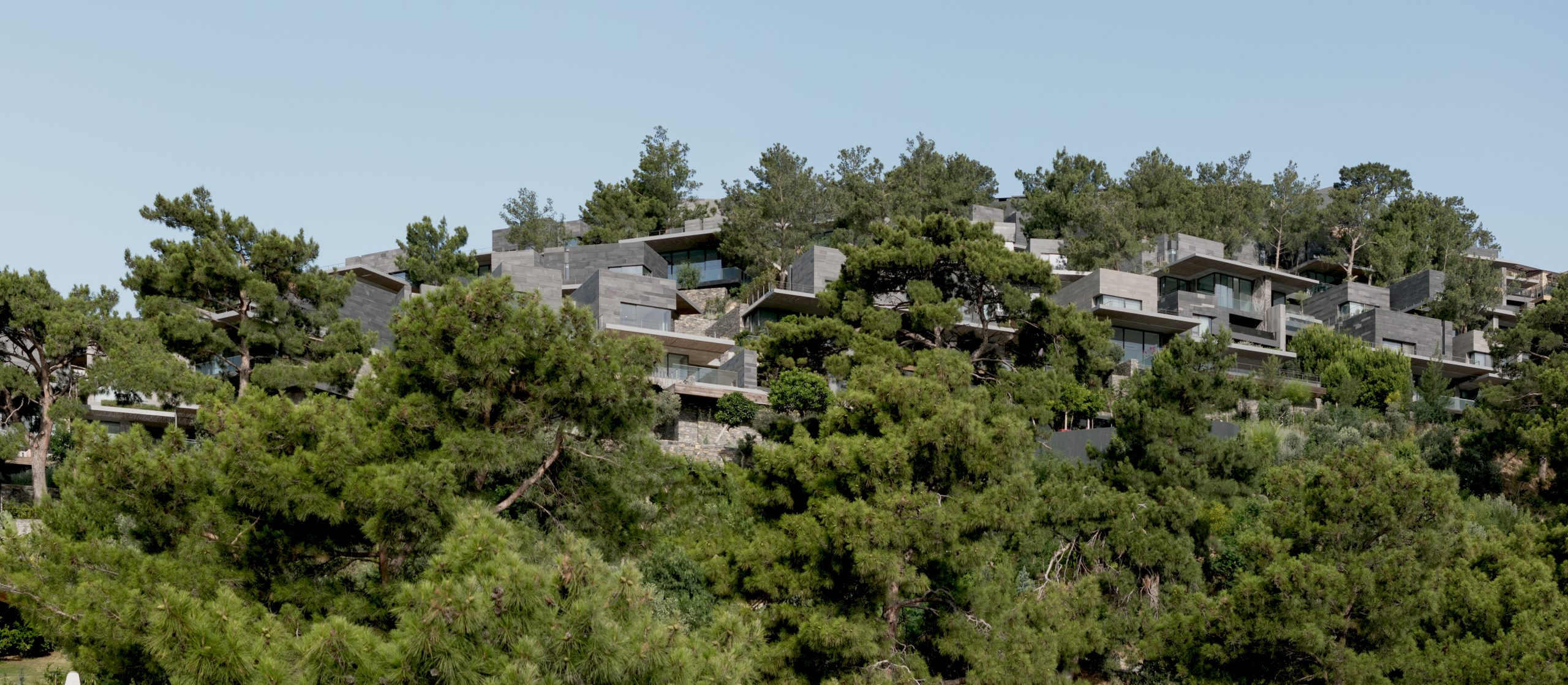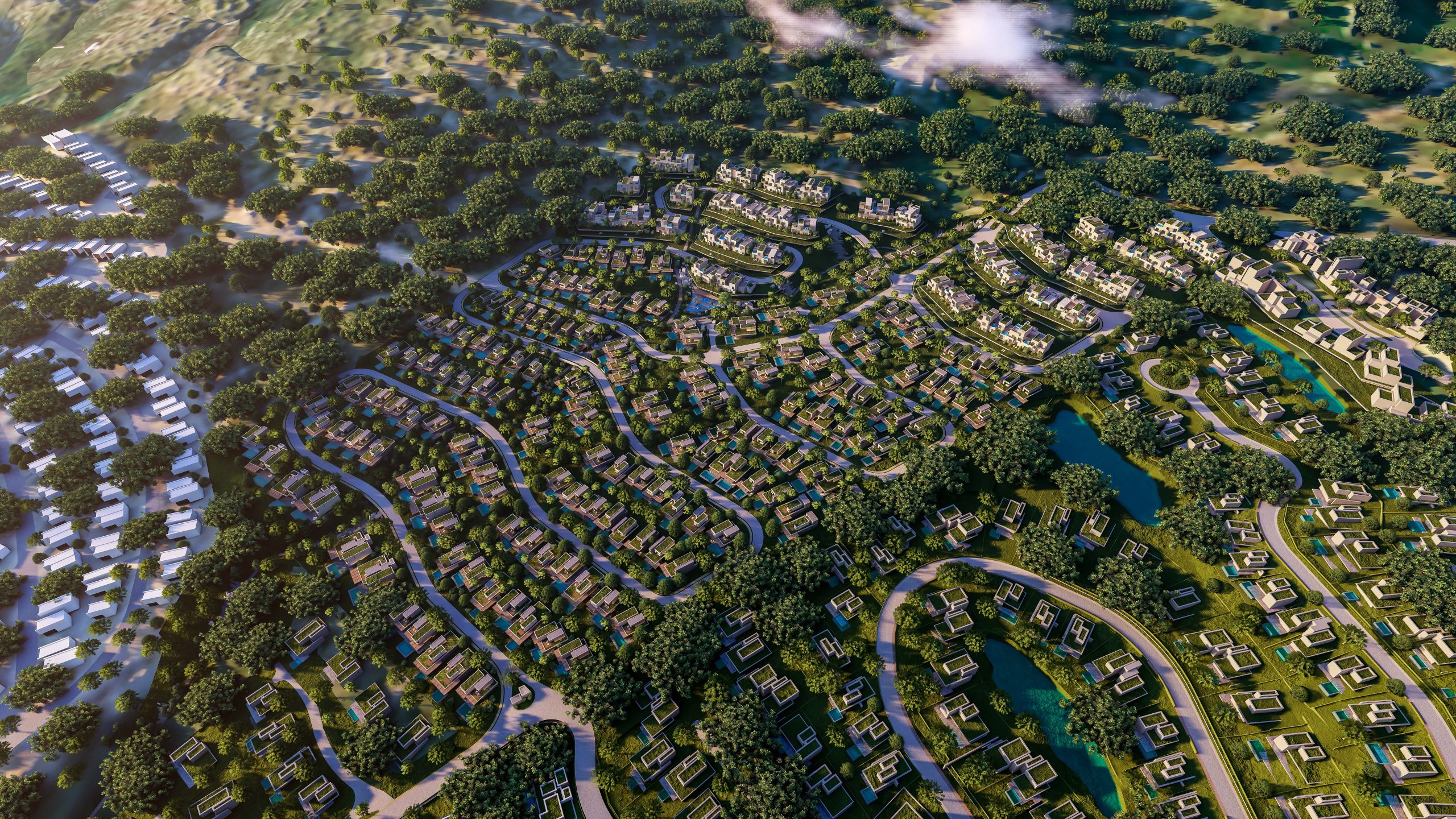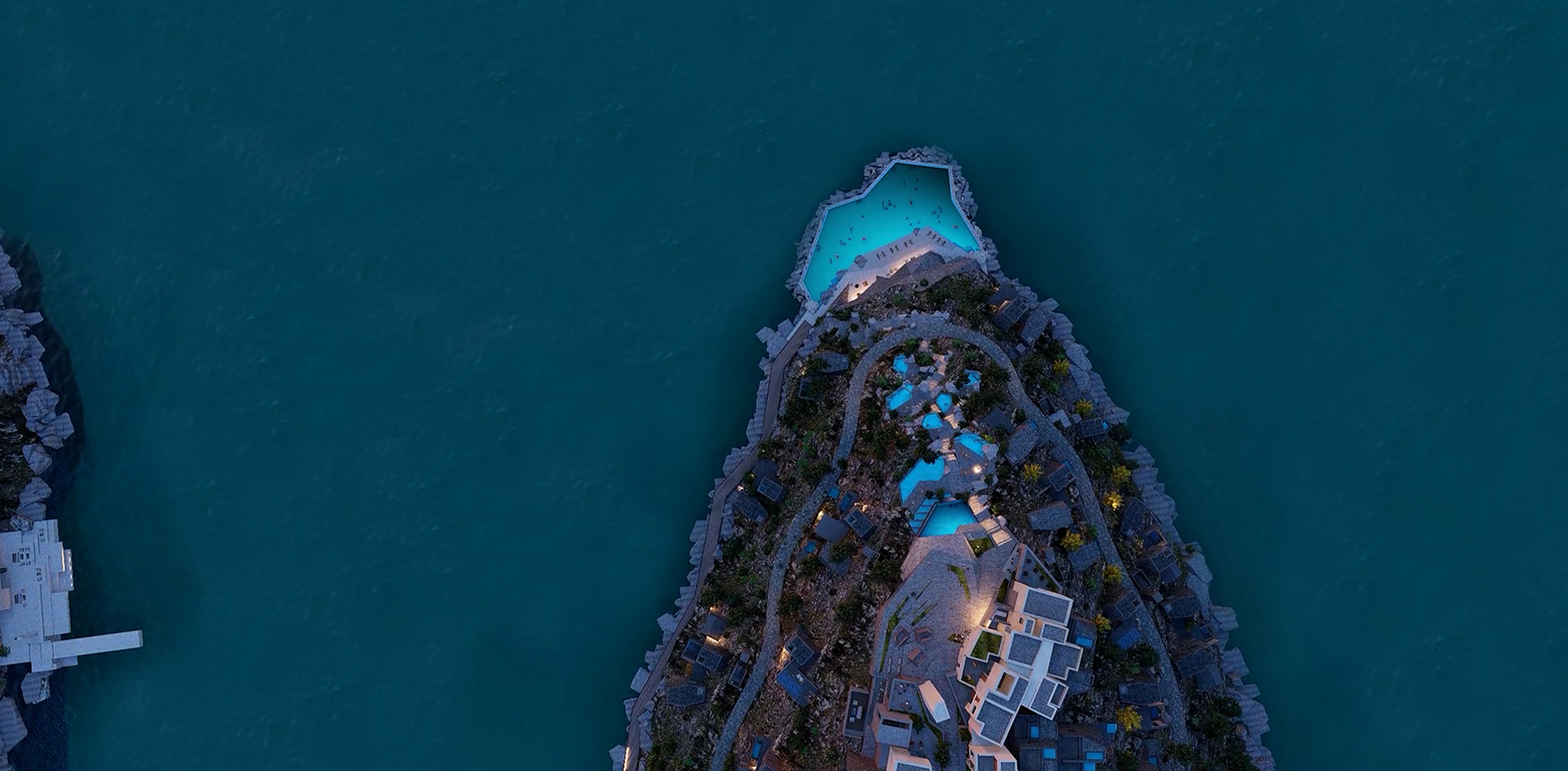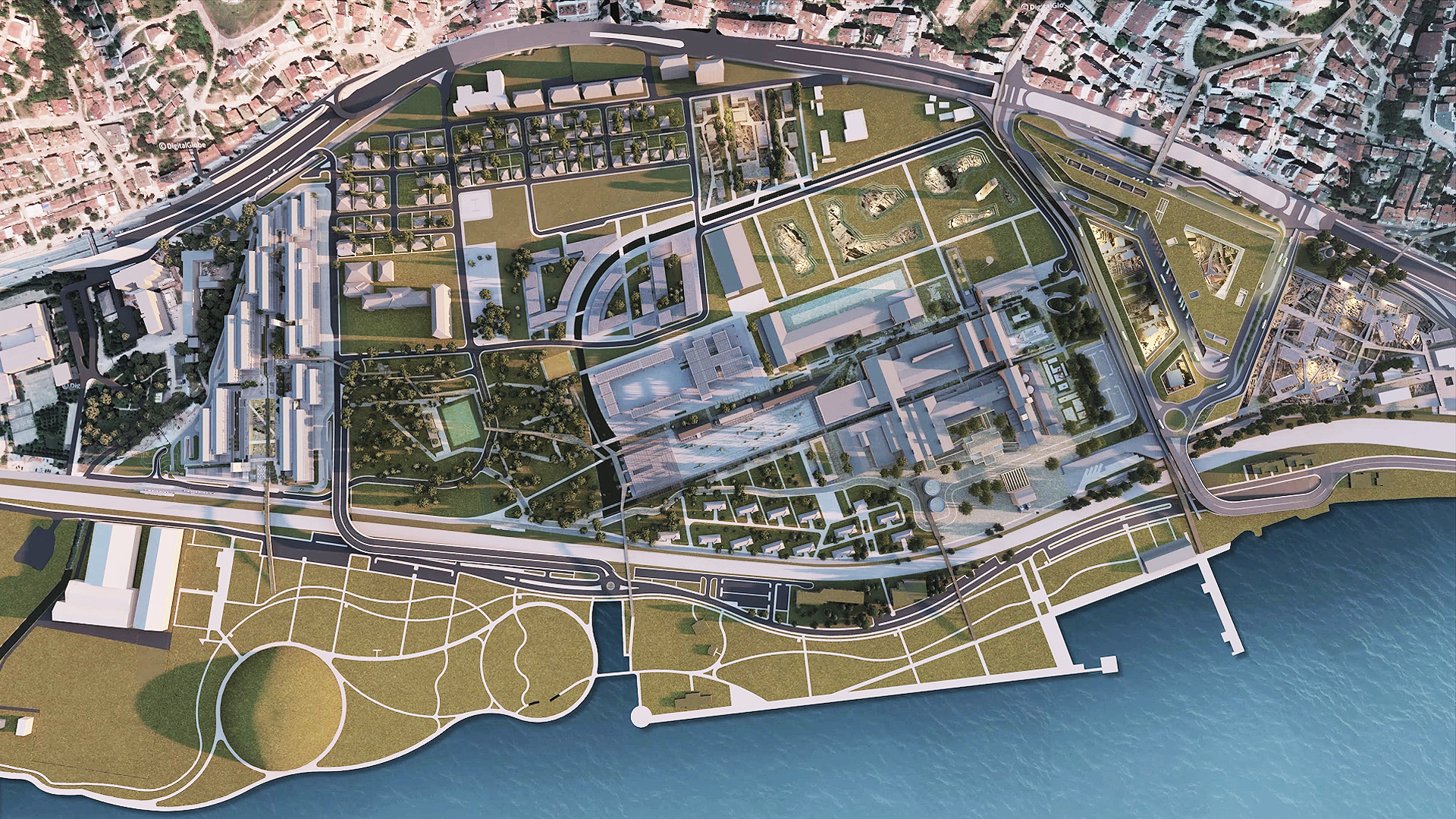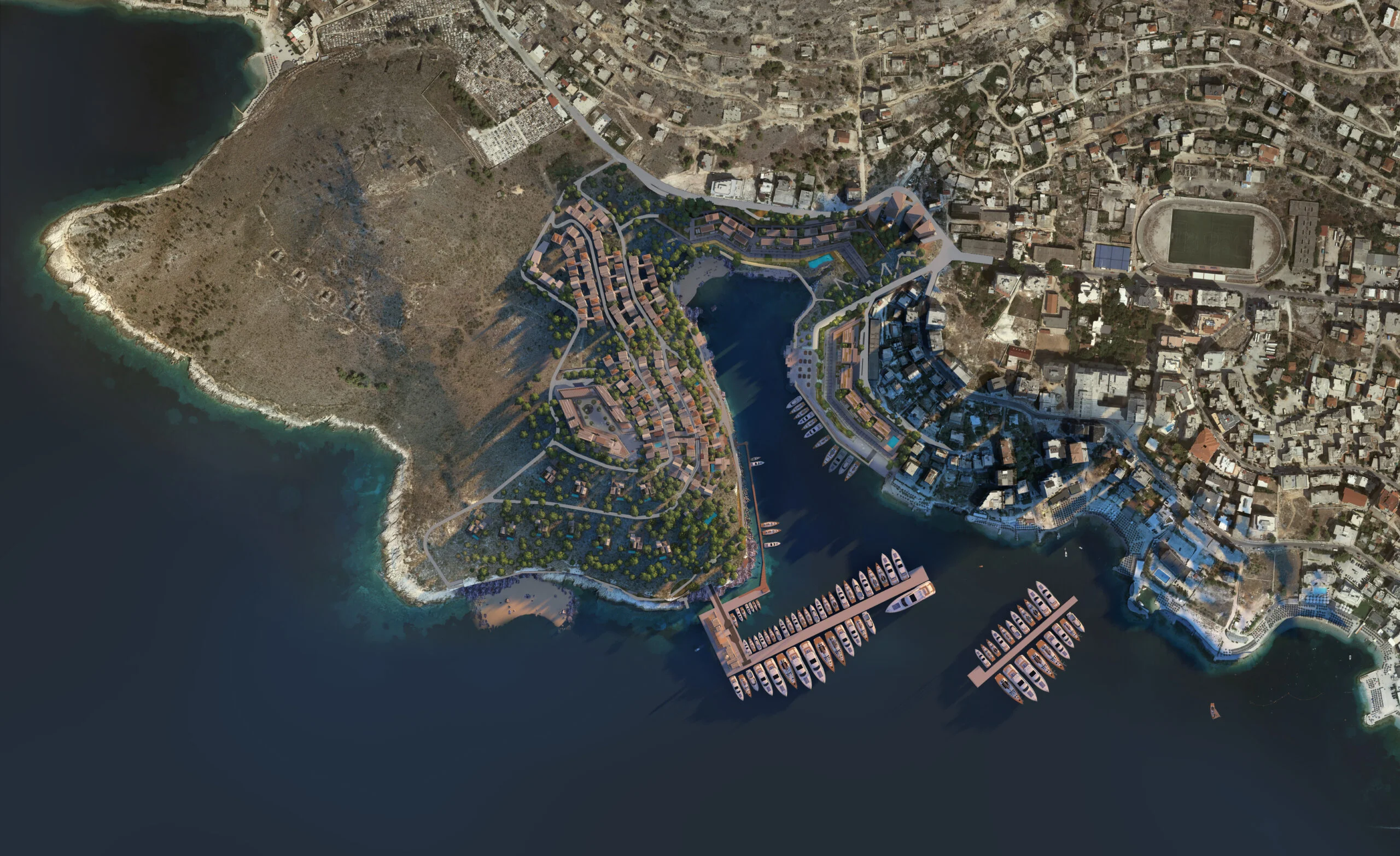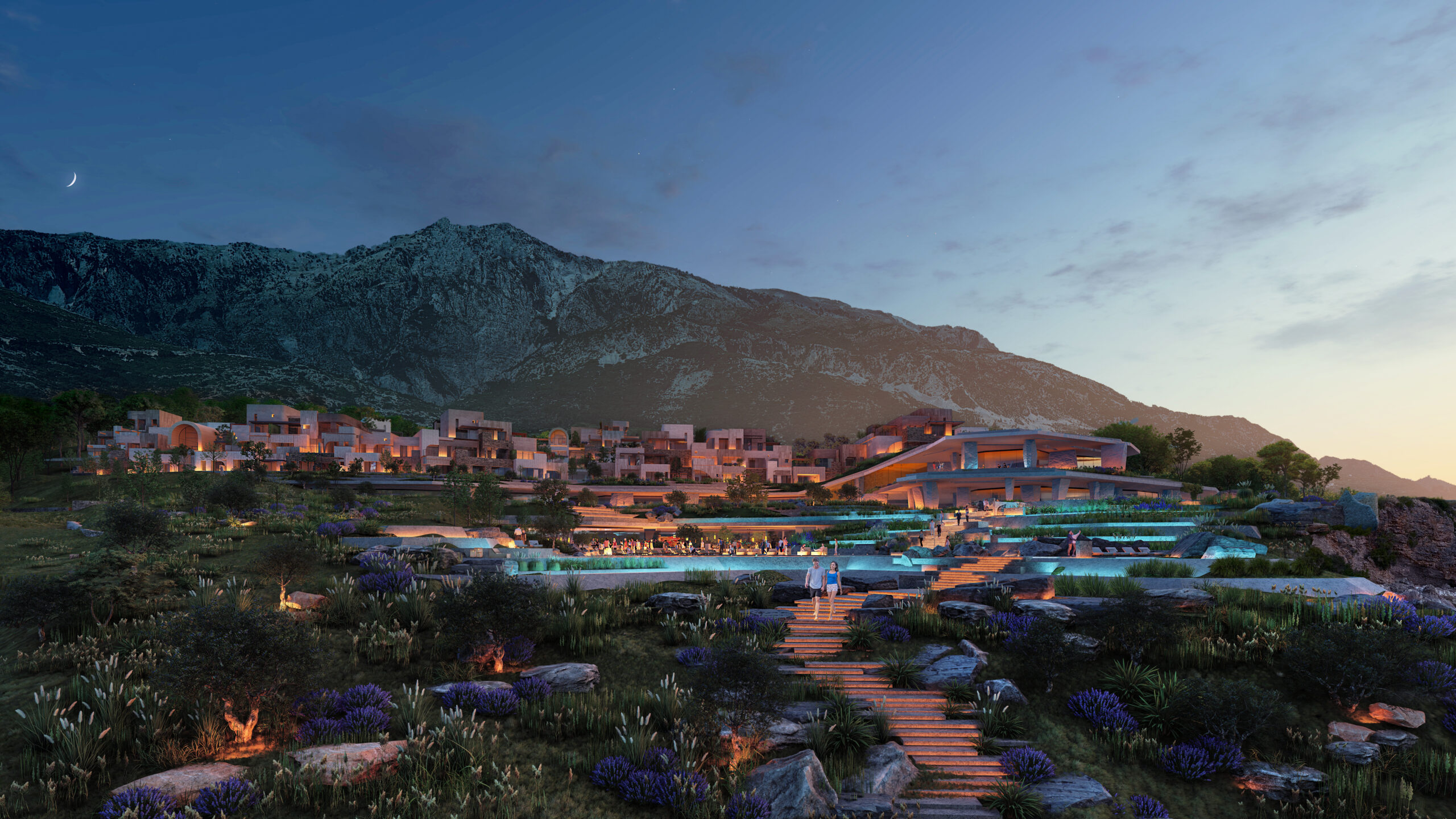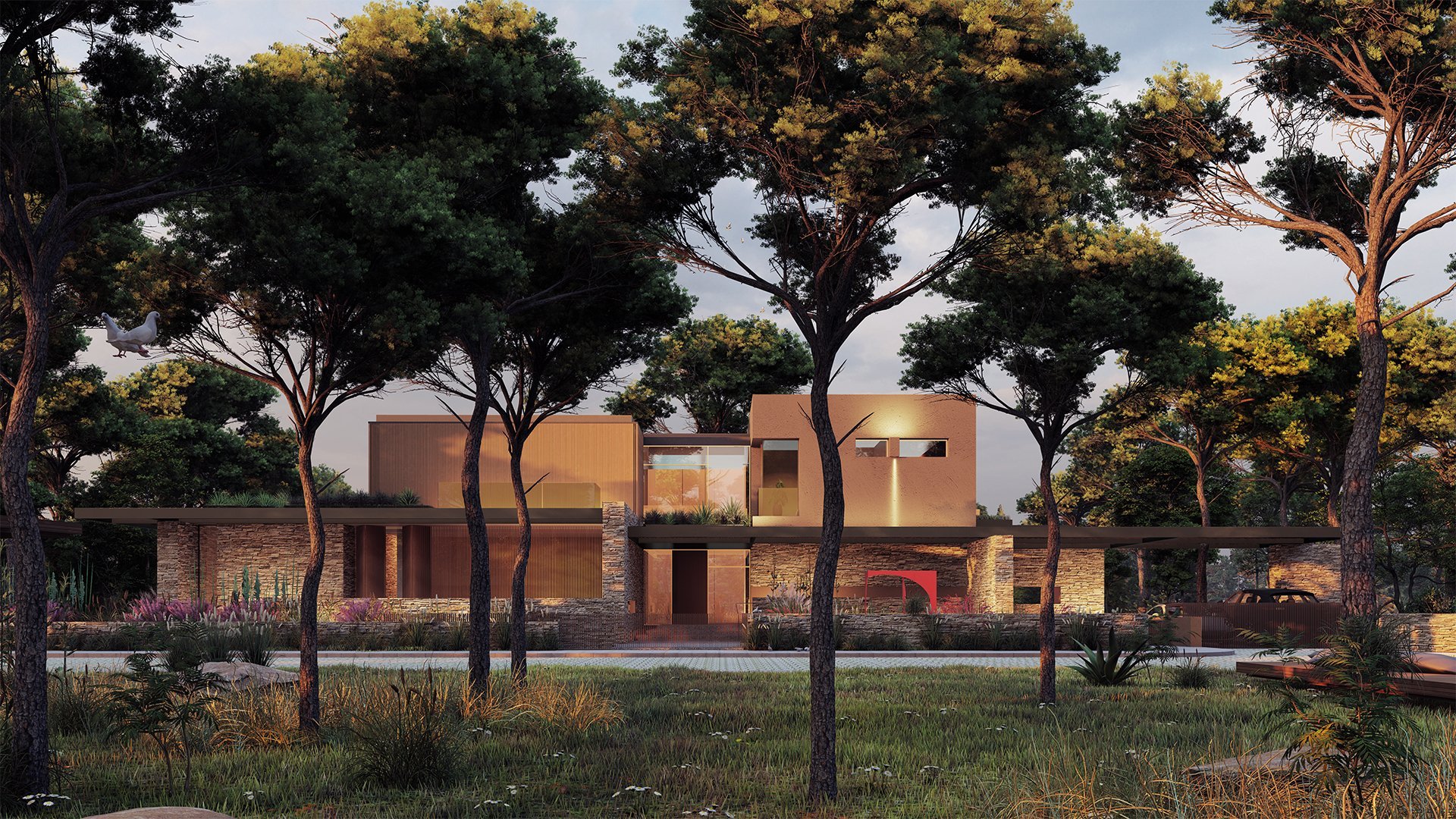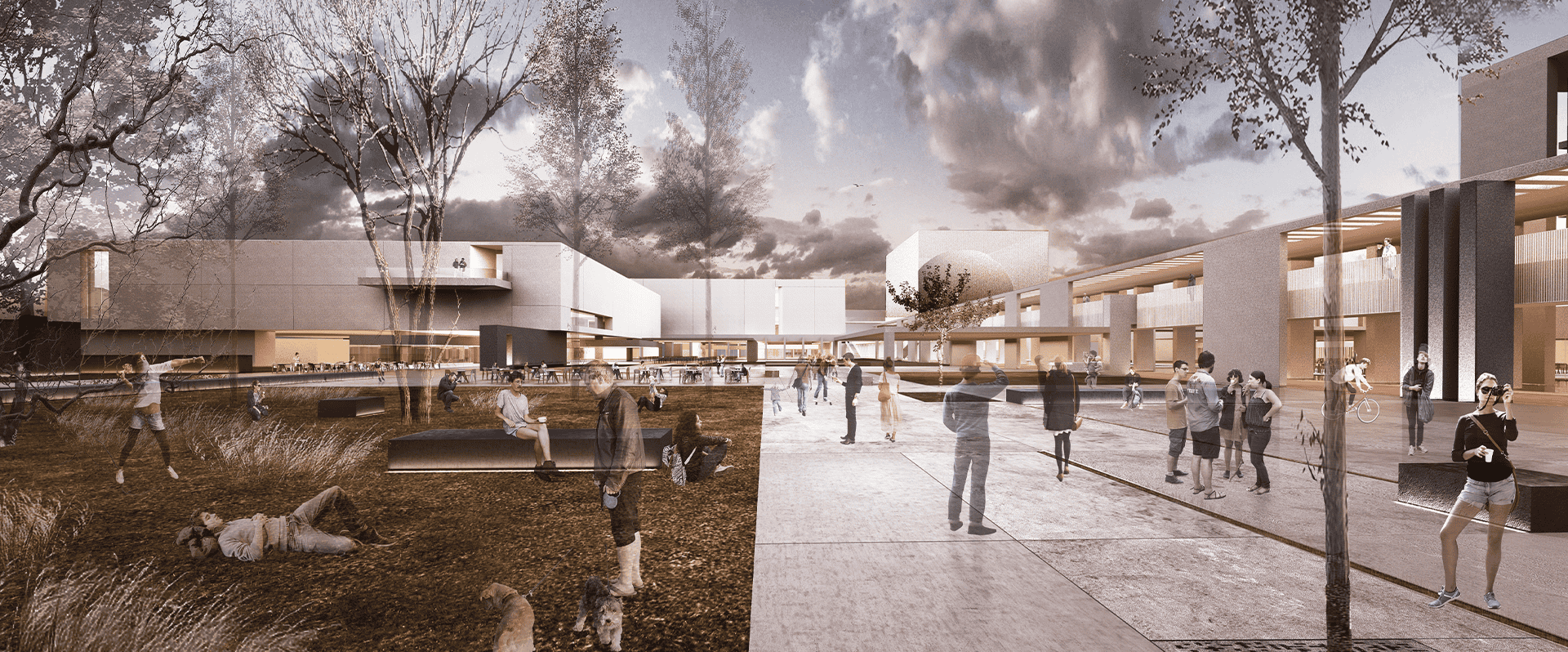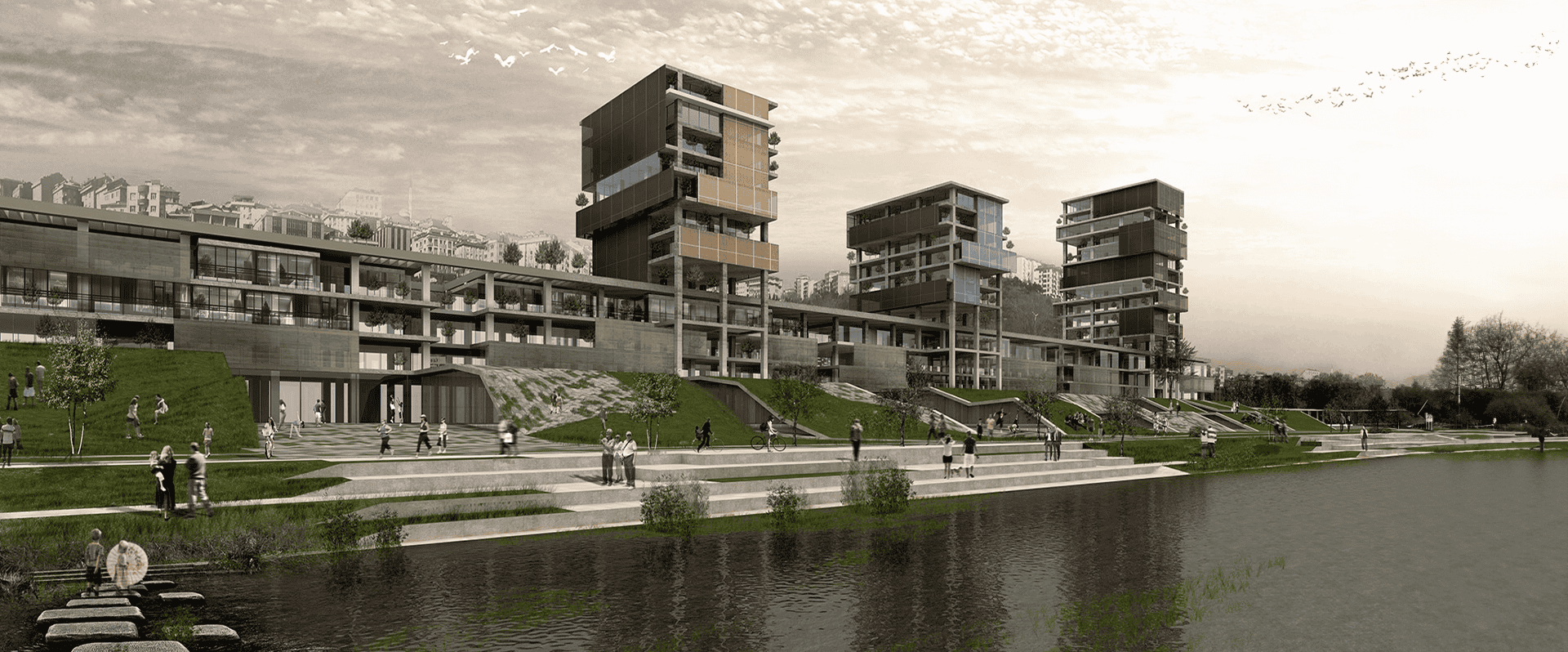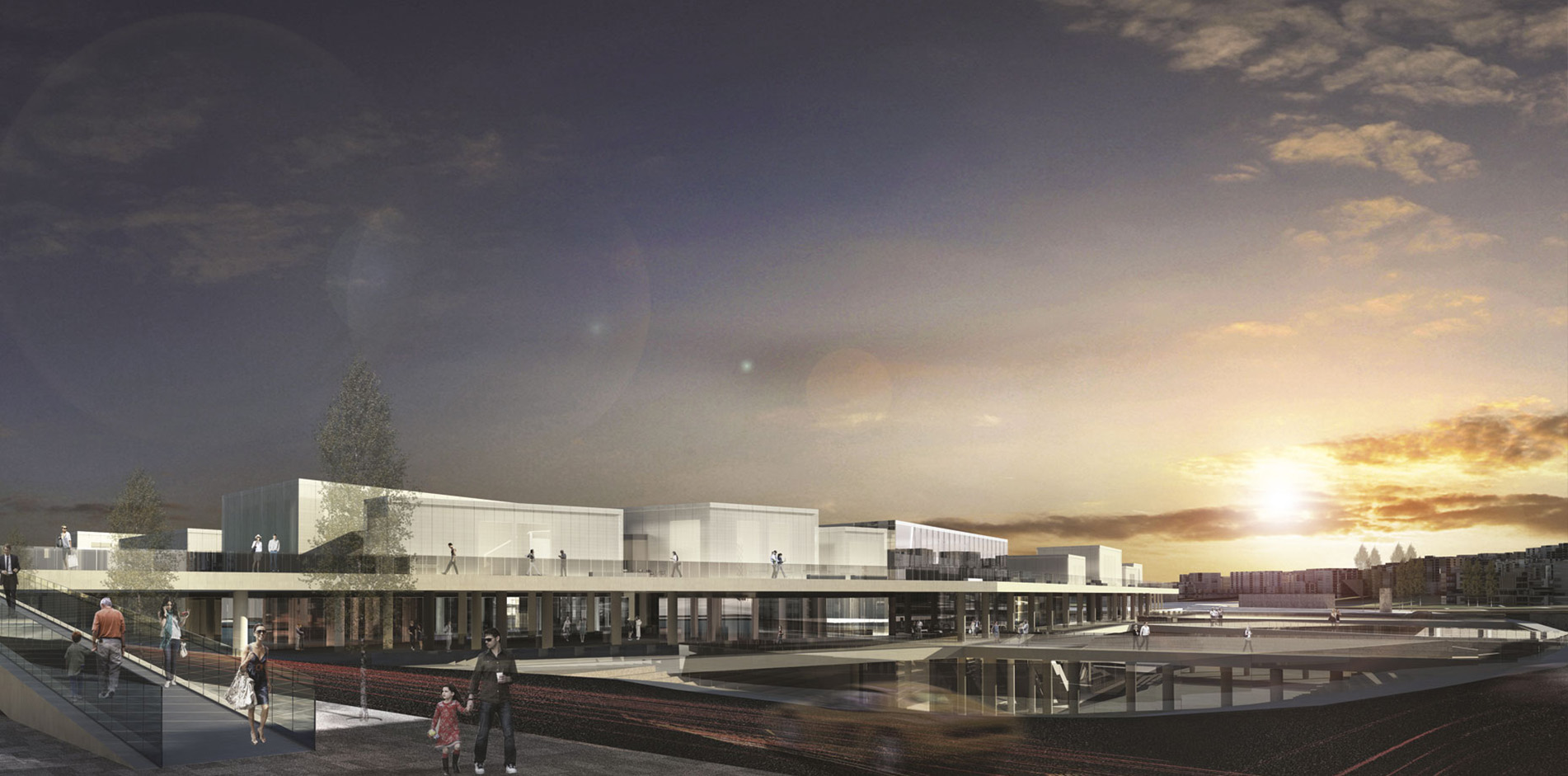The design process of Gölköy Houses was primarily shaped by the defining characteristics of the context in which the houses are situated and the relationship to be established with the land on which they would be positioned. Accordingly, the settlement strategy for the units was developed with the core idea of preserving the mature trees, rich rock formations, and topographic features of the land, while avoiding large-scale interventions.
All the structures were approached with a focus on blending with the natural texture rather than standing out when viewed from the sea. The lower levels were treated as platforms gently placed within the voids allowed by the terrain, always conforming precisely to the form of those voids. These grounds, often housing the living areas, were intended to integrate and, over time, seamlessly merge with the surrounding rich natural texture. The upper levels, on the other hand, were designed based on the idea of composing relatively more distinct prismatic masses of Mediterranean vernacular architecture with a fragmented language. This approach aimed to create open and semi-open spaces in different directions and at varying levels, providing alternative uses at different times of the day. This configuration ensured that each unit had an uninterrupted view of the sea, while the fragmented design language was further enriched with a natural and textured material palette. The primary materials of this palette included natural stone, wood, and exposed concrete, each in various colors and textures.
The facades of the living areas facing the sea were designed to open seamlessly to the view, establishing a visual dialogue. The placement of different units was meticulously studied to ensure that they would not disrupt the land’s topography and integrate smoothly into their natural surroundings. This strategy enabled the structures to blend into the existing texture and virtually disappear into the landscape, particularly when viewed from the sea.


